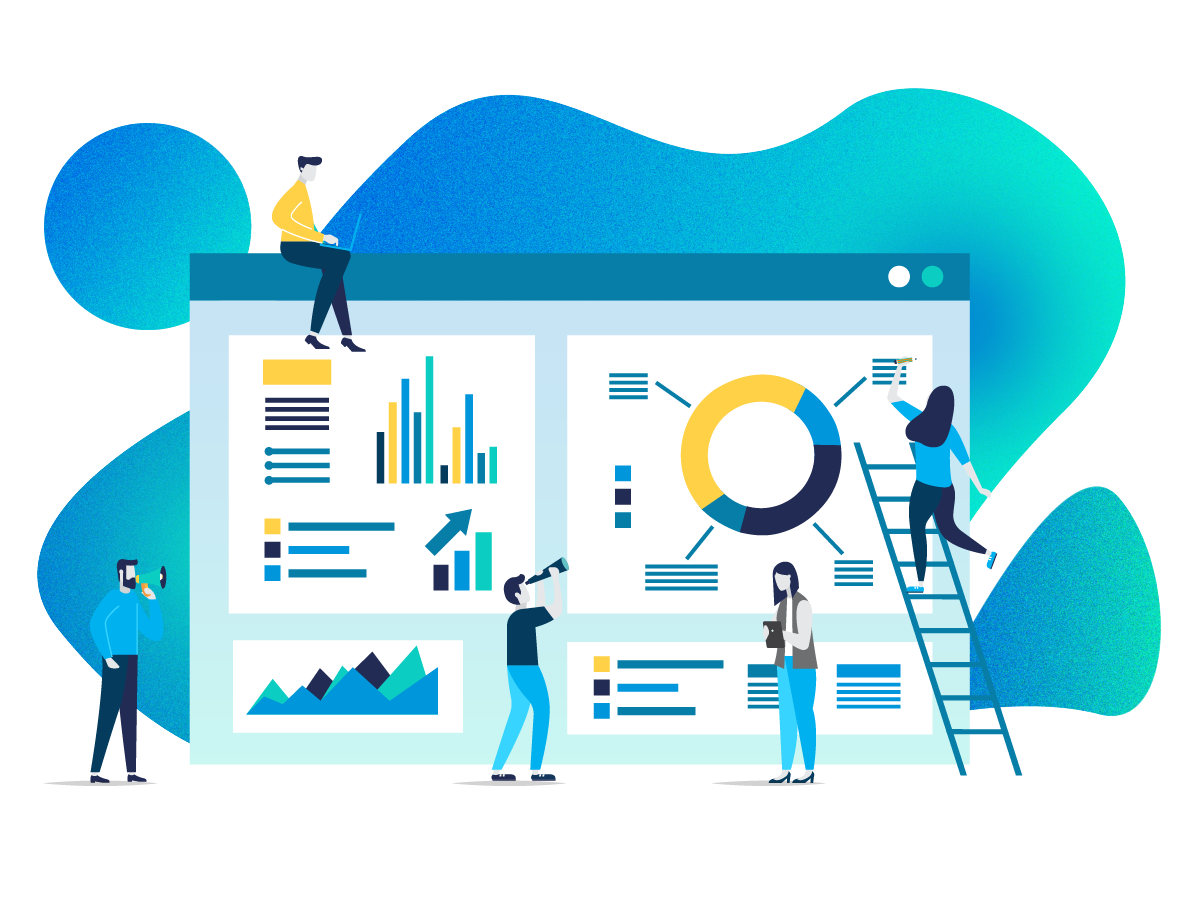Hello!
We all know how important it is to be proactive about collecting customer data - but it’s not enough to simply collect it and then stuff it into a database. Most brands these days dedicate a huge amount of time to grab information from customers, but many are not then using it effectively.
It’s not what you’ve got, it’s what you do with it
 The successful brand needs to source and use data right across its IT, marketing and transactional systems. This helps them to get a better picture of the customer. Obtaining a full and consolidated understanding of who the customer is and what they want should be a vital part of any marketing strategy.
The successful brand needs to source and use data right across its IT, marketing and transactional systems. This helps them to get a better picture of the customer. Obtaining a full and consolidated understanding of who the customer is and what they want should be a vital part of any marketing strategy.
For example, hotel behemoth, Ritz-Carlton, has worked hard to understand its customer base in order to offer a personalized service by recognizing guests’ preferences. In this case, preferences can be favorite room service orders and pillow choices. In order to understand the customer, we need to understand that there are different levels of customer - let’s take a look at them.
It’s been emotional
Every customer offers value to a brand - but some most definitely more than others.
 We can generally categorize customers by their relationship to the brand as follows:
We can generally categorize customers by their relationship to the brand as follows:
- The Likers - These customers will use a brand and have a favorable opinion of the brand without commitment or passion.
- The Companionates - These customers are committed to the brand and enjoy an intimate relationship with that brand.
- The Romantics - These customers are actively passionate about the brand and are committed to championing that brand.
- The Infatuates - These customers will be passionate about a brand - although their infatuation with a brand may be short lived.
- The Consummate Lovers - These customers are fully committed to a brand and are passionate about that brand, including recommending it to others.
- The Fatuous Lover - These customers display a solid combination of passion and commitment toward a brand.
- The Empty Lover - These customers may commit to a brand but will generally not display any real passion toward that brand.
Hey big spender
 For any brand, affluent customers are the holy grail and, often the toughest to win over. Affluent shoppers know their brands and demand the best - including a fully personalized service. These affluent customers are also, often, protective of their data - much more so than lower end customers.
For any brand, affluent customers are the holy grail and, often the toughest to win over. Affluent shoppers know their brands and demand the best - including a fully personalized service. These affluent customers are also, often, protective of their data - much more so than lower end customers.
So, how do you get your hands on these affluent customers and win them over to turn those emotions into transactions?
Get in touch
You want more than just followers or customers, you want to build a community. By engaging with customers and building a community, you will be on the right path to create a money-making brand.
 If you want devoted customers, it’s time to get touchy feely. Customer touch points should be consistent across all of a brand’s offline and digital channels. This helps to supersize data and, more importantly, supersize the customer experience.
If you want devoted customers, it’s time to get touchy feely. Customer touch points should be consistent across all of a brand’s offline and digital channels. This helps to supersize data and, more importantly, supersize the customer experience.
By creating and nurturing a Single Customer View (SCV), engagement and transactions will almost certainly follow. By creating an SCV, brands can integrate customer data into one actionable resource. Many brands benefit from the services of a data planning specialist in order to form more profitable customer relationships which are aligned with commercial value.
It’s all about you
 We’ll let you into a secret; customers - and, in particular, high end customers, can see through your marketing. Too many brands make the mistake of churning out the same tired old offers to all of their customers. The forward-thinking brand should be using its data in order to make communications - and offers - more personalized and relevant to customers.
We’ll let you into a secret; customers - and, in particular, high end customers, can see through your marketing. Too many brands make the mistake of churning out the same tired old offers to all of their customers. The forward-thinking brand should be using its data in order to make communications - and offers - more personalized and relevant to customers.
Rather than dry and full email content, try video or quirky images in order to keep re-engaging customers. High end customers need to feel valued and so it’s really important to keep an eye on how you’re using their precious data. This is vital in order to avoid them reaching for that unsubscribe button.
A decent proposal
 For brands who operate a loyalty scheme, the data collected is beyond value - as long as you keep customers engaged. As with email communication in general, it’s important to make sure that the value proposition within a loyalty or reward scheme is, well, rewarding.
For brands who operate a loyalty scheme, the data collected is beyond value - as long as you keep customers engaged. As with email communication in general, it’s important to make sure that the value proposition within a loyalty or reward scheme is, well, rewarding.
Customers who receive endless emails from a brand offering 20p off a £100 purchase or similar are likely to be unimpressed with these low value rewards and. In many cases, customers will simply bin emails without opening. Try offering low cost, high value rewards such as VIP members, invitations to events and access to products and offers not available to non-members. Customer rewards don’t need to be expensive for a brand if they’re prepared to put in a bit of work and use a touch of creativity.
Transforming interactions into transactions
If a brand isn’t proactive about measuring customer interactions, the data collected is, in a sense, useless. Brands should be measuring both current engagement from customers as well as running intelligent predictions on future behavior. Many brands put in a lot of work setting up Facebook and Twitter accounts only to then allow them to sit gathering dust. NPS (Net Promoter Score) speaks to the percentage of customers who are likely to - or not likely to - recommend a brand to their friends, family and workmates.
This is all about the metrics and takes into account the following factors:
- Net Promoter Score
- Customer Satisfaction
- Customer Effort Score
- Customer Churn Rate
- Response and handling time
 These metrics are of paramount importance as they are all about a brand’s perceived reputation. In our brave new world, customers have a huge number of outlets on which they can talk about how great a brand is - or isn’t. This means that at any time, day or night, customers can be making or breaking a brand’s reputation online. For this reason, brands need to stop treating their social media as an afterthought.
These metrics are of paramount importance as they are all about a brand’s perceived reputation. In our brave new world, customers have a huge number of outlets on which they can talk about how great a brand is - or isn’t. This means that at any time, day or night, customers can be making or breaking a brand’s reputation online. For this reason, brands need to stop treating their social media as an afterthought.
All social media accounts should be monitored constantly in order to find out what’s being said about a brand. This also helps with keeping on top of those customer questions and complaints.
 One brand who has social media nailed is fashion giant, Burberry, who is incredibly proactive with social media. As a result, the brand has a huge 11 million Facebook followers. But it doesn’t stop there - once you’ve got an audience, you need to find out how they tick by using Sentiment Analysis tools such as Brand24. Sentiment Analysis allows brands to find out what their customers - and potential customers - are saying about them.
One brand who has social media nailed is fashion giant, Burberry, who is incredibly proactive with social media. As a result, the brand has a huge 11 million Facebook followers. But it doesn’t stop there - once you’ve got an audience, you need to find out how they tick by using Sentiment Analysis tools such as Brand24. Sentiment Analysis allows brands to find out what their customers - and potential customers - are saying about them.
This gives brands a heads up in terms of averting problems and improving service. Sentiment Analysis trawls your social media and online presence to find mentions of your brand - and then grades those mentions from negative, through neutral, through to positive.
Although it’s not an exact science, Sentiment Analysis is vital in helping brands to find out how they are perceived by the public and to take positive action if needed. There are tons of tools available including, for the cash strapped brand, some which are free to use.
All part of the service
These days, when we think about marketing and service, we automatically think digital but, that’s not the whole story. Brands should be using data in order to improve customer service in real life stores. A thriving brand with a bricks and mortar store should be clearly communicating its customer relationship strategy across all in-store technology. This means IT systems and real, human staff.
Despite our evolving technology, most brands are ignoring the fact that data isn’t being used sufficiently to connect the online and offline experience. A lot of customer frustration stems from the fact that a brand’s online and offline experience are two completely separate ones. This leaves the in the position of having to choose between the two. Customers who regularly use a retail website are currently rarely recognized when they visit an actual store - unless they hold a store card.
 Brands need to recognize this pain point and use customer data in order to provide a seamless and personalized customer experience on and offline.
Brands need to recognize this pain point and use customer data in order to provide a seamless and personalized customer experience on and offline.
Before we get too excited about the new technology at our fingertips, it’s important to never forget the power of a real-life human being when it comes to customer service. It’s great to be able to offer time saving automated booking systems and chatbot customer service processes but, in the event of a n issue, most customers still value being able to speak to a mere mortal when looking to solve problems.
Also read:
- Top 5 Marketing Trends for 2025
- Metadata And Reviews of Active NFTs
- 7 Privacy Trends for Companies to Look Out for in 2025
- 6 Technologies To Improve Your Branding
Data to Brand Devotion - From emotion to transaction
 For the future focused brand, there are any number of ways available with which to create better and more devoted customer relationships. This can be done through date fueled insight and behavior-targeted campaigns. It’s been proven time and time again that there’s a very real, tangible link between marketing and increased revenue.
For the future focused brand, there are any number of ways available with which to create better and more devoted customer relationships. This can be done through date fueled insight and behavior-targeted campaigns. It’s been proven time and time again that there’s a very real, tangible link between marketing and increased revenue.
Brands therefore should be harnessing the emotion, passion and commitment which drives affluent customers to the checkout. We have a very real opportunity to harness the power of technology and combine it with outstanding customer service. This will ensure that customers are engaged, devoted - and spending money with your brand.
Thank you!
Subscribe to our newsletter! Join us on social networks!
See you!






